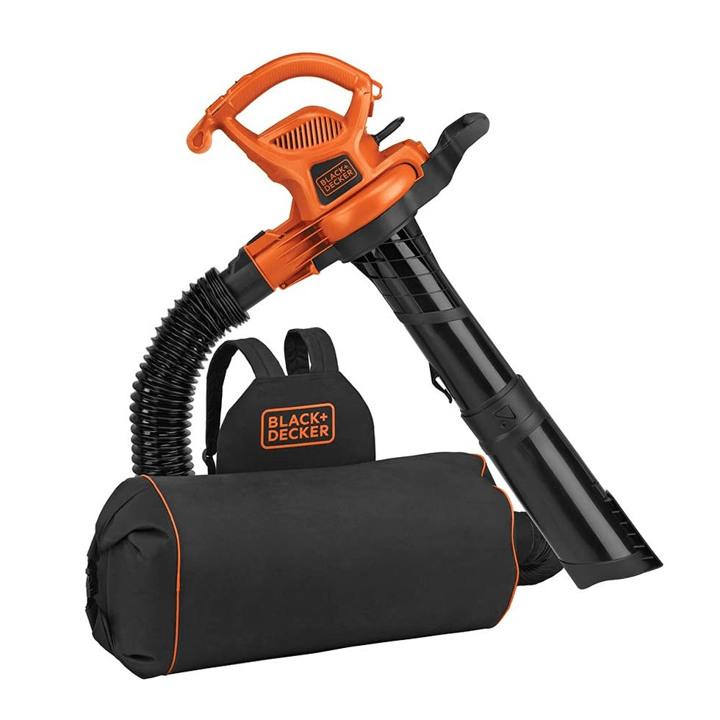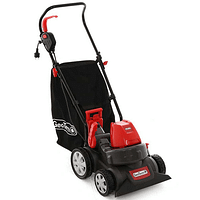As the leaves start to fall and the cooler weather sets in, many homeowners turn to leaf vacuums to quickly and efficiently clear their yards of the seasonal debris.
Leaf vacuums have become a popular tool for maintaining a tidy outdoor space, but have you ever wondered exactly how they work?
In this blog post, we'll dive into the inner workings of leaf vacuums and explore the science behind these handy yard cleaning machines.
The Basics of Leaf Vacuums
At their core, leaf vacuums are designed to suck up leaves, twigs, and other organic matter from your lawn or garden.
They typically consist of a few key components:
- Suction Fan: The powerful suction fan is the heart of the leaf vacuum. This high-powered fan creates a strong airflow that pulls the leaves and debris into the machine.
- Collection Bag or Canister: The leaves and other materials are funneled into a collection bag or canister, where they are stored until you're ready to dispose of them.
- Vacuum Tube or Nozzle: This is the part of the leaf vacuum that you use to direct the suction and guide it over the ground to pick up the leaves.
- Engine or Motor: Depending on the model, leaf vacuums are powered by either a gas engine or an electric motor, which provides the energy to run the suction fan.
How the Suction Works?
The key to a leaf vacuum's effectiveness lies in its ability to generate powerful suction.
This suction is created by the high-speed rotation of the fan inside the machine.
As the fan spins, it draws in air through the vacuum tube or nozzle, creating a low-pressure area. This low-pressure zone then pulls the leaves and other debris into the airflow, sucking them into the collection bag or canister.
The size and design of the fan, as well as the motor or engine powering it, determine the strength of the suction. Larger, more powerful fans can generate stronger airflow, allowing leaf vacuums to pick up heavier or more stubborn materials.
Some models also feature variable speed settings, giving users more control over the suction power based on the task at hand.
The Shredding and Mulching Process
In addition to simply vacuuming up leaves, many modern leaf vacuums also incorporate shredding and mulching capabilities.
As the leaves and debris are pulled into the machine, they pass through a series of blades or impellers that chop and shred the material into smaller pieces.
This shredding process serves two main purposes:
- Volume Reduction: By breaking down the leaves into smaller fragments, the shredding mechanism allows more material to be packed into the collection bag or canister, reducing the number of times you need to empty it.
- Mulching: The finely shredded leaves can then be used as a nutrient-rich mulch for your garden or lawn. The small pieces decompose quickly, providing valuable organic matter and nutrients to the soil.
Some leaf vacuums even have adjustable shredding settings, allowing you to control the size of the mulch pieces to suit your specific needs.
This versatility makes them a valuable tool for gardeners and landscapers who want to turn their yard waste into a useful soil amendment.
Differences Between Handheld and Wheeled Leaf Vacuums
Leaf vacuums come in two main varieties: handheld models and wheeled/backpack models.
Each type has its own unique features and benefits:

1. Handheld Leaf Vacuums:
- Lightweight and maneuverable, making them easy to use in tight spaces and around obstacles
- Typically powered by rechargeable batteries or a corded electric motor
- Suitable for smaller yards and light-duty leaf cleanup tasks

2. Wheeled/Backpack Leaf Vacuums:
- Larger and more powerful, with stronger suction and higher airflow
- Often gas-powered, providing longer runtime and more consistent performance
- Equipped with wheels or a backpack harness for easy transportation around the yard
- Better suited for larger properties and heavy-duty leaf removal
When choosing a leaf vacuum, it's important to consider the size of your yard, the volume of leaves you need to manage, and your personal preferences in terms of portability, power, and runtime.
Carefully evaluating these factors will help you select the leaf vacuum that best fits your needs.
Maintenance and Care
To ensure your leaf vacuum continues to perform at its best, it's important to properly maintain and care for the machine.
Here are some key maintenance tips:
- Clean the Collection Bag or Canister: Empty the bag or canister after each use to prevent it from becoming overfilled and reducing the suction power.
- Check and Clean the Filters: Many leaf vacuums have filters that need to be cleaned or replaced periodically to maintain airflow and prevent clogging.
- Inspect the Vacuum Tube or Nozzle: Look for any blockages or obstructions that could impede the suction. Clear any debris that may have accumulated.
- Sharpen or Replace the Shredding Blades: Over time, the blades used for shredding and mulching can become dull. Sharpen or replace them as needed to ensure efficient leaf processing.
- Perform Routine Engine/Motor Maintenance: For gas-powered models, follow the manufacturer's recommendations for oil changes, air filter replacements, and other engine maintenance. Electric models may require less frequent servicing, but it's still important to keep the motor and electrical components in good working order.
Safety Considerations
When using a leaf vacuum, it's important to prioritize safety.
Here are some key safety tips to keep in mind:
- Wear Protective Gear: Always wear safety glasses, gloves, and sturdy shoes when operating a leaf vacuum to protect yourself from flying debris and potential injuries.
- Avoid Wet Leaves: Vacuuming wet leaves can clog the machine and reduce its effectiveness. It's best to wait for leaves to dry before using the vacuum.
- Keep Children and Pets Away: The powerful suction and whirring blades of a leaf vacuum can pose a serious hazard to young children and pets. Ensure the work area is clear of any bystanders.
- Follow Manufacturer Instructions: Carefully read and follow the safety guidelines provided by the leaf vacuum's manufacturer. This will help you operate the machine correctly and avoid any potential issues.
- Use Caution with Gas-Powered Models: For gas-powered leaf vacuums, be mindful of fuel storage, refueling procedures, and proper ventilation to prevent fire hazards or carbon monoxide poisoning.
Conclusion
Leaf vacuums are a valuable tool for homeowners and landscapers who want to efficiently and effectively manage the seasonal leaf litter in their yards.
By understanding how these machines work, from the powerful suction generated by the fan to the shredding and mulching capabilities, you can make an informed decision when selecting the right leaf vacuum for your needs.
Remember to prioritize maintenance and safety, and you'll be well on your way to enjoying a tidy, leaf-free outdoor space all year round.
Happy vacuuming!
